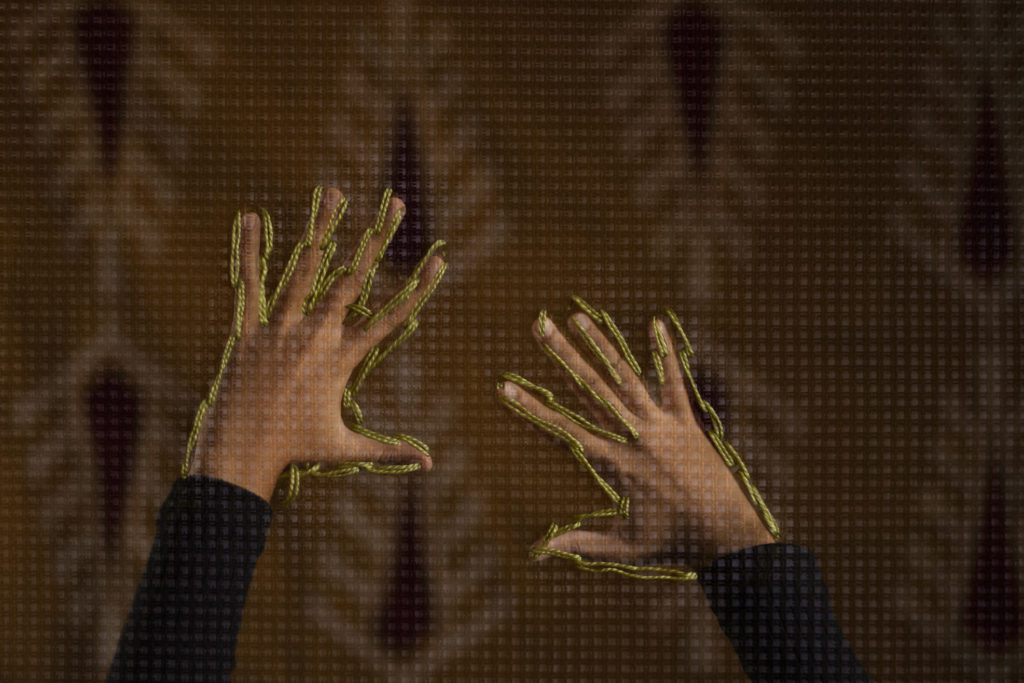Groundbreaking Workshop on AI and Technology-Facilitated Gender-Based Violence at AWiM24
Trending
Monday June 2, 2025
Trending

As a teenager living in the U.S, I was frequently asked if I owned a camel back at home, how come my English was so good and why my mother wears a scarf over her head.
I’d explain that I don’t own a camel because I was raised in the city, my English is good because I’ve been learning it in school since kindergarten and from tv and the internet – yes, we have those in Cairo – and my mom chose to wear that scarf because she is a woman of faith.
After a few seconds of silence, we would resume playing basketball in the schoolyard.
This is how most conversations would go in my first year living in the U.S in 1999. I considered it a strange icebreaker to make friends, it was awkward hearing all of these ridiculous stereotypes but my father advised me to take it lightly in order to fit in.

Caption: Mirror and Window.
I was in school on September 11, 2001, and unaware of what was going on when our principal had us all return home early. As I opened the door to our apartment I saw my mother watching the news with an expression of disbelief on her face. I could only see smoke and hear the sound of sirens in the background as a journalist tried to explain what was going on.
For the next few days, my parents would call their friends from the mosque to check up on one another. My mom exchanged her traditional scarf with a red bandana she took from my drawer when going out to get groceries.
My first day back at school seemed surreal. I could feel the eyes staring at me as I approached my locker. Friends noticeably pretended not to see me waving from the other side of the class.
I found myself dribbling the basketball all alone in the schoolyard.
This was my first time to realise that my identity as a Muslim and North African female comes with baggage that predetermines how people would see and treat me.

I fell in love with photography in high school in Egypt, fascinated by how I can express myself and document what’s around me. As I would take photographs of my community, I became drawn to learn further about my own identity and make sense of its complexity.
The Egyptian revolution in 2011 came with a rare feeling of pride in my identity and a motivation to trace my ancestry. After many years of research, I discovered my Bedouin and Palestinian roots. I committed to advocating for Bedouin community rights in Sinai. I rooted myself within the Sinai Bedouin lands and I felt a bond with its community.
Yet, I understood I may remain forever a close ally not a full-fledged member of the Bedouin community. So when I decided to develop a personal project on the Bedouin community and my connection, I needed to first explore how to centre the community’s voice within that project.
As an advocate for Bedouin community rights, I understood the baggage the Bedouin identity carried. Despite inhabiting and protecting the Sinai lands for hundreds of years, the Bedouin communities remain in constant struggle; facing discrimination, stigma, and stereotyping.
Misrepresented in the media, labelled as closed off and a threat to modern societies – like many native and indigenous communities – Bedouins of Sinai are treated as second-class citizens. Their way of life is threatened as the economy declines, social stigma remains and lack of infrastructure, medical care, and poor access to education leaves more generations battling with their identity.

This project paved the way for me to explore collaborative approaches, transforming subjects into collaborators, and involving the diverse voices of the community.
For too long non-western communities have only been seen through the western gaze and a prejudicial lens, feeding into the narrative of ‘us versus them’.
These dehumanising perspectives have, for decades, created linear narratives and distance between people around the globe. Even our gaze as African practitioners in the media often reflects the influence of the West.
As African women, we’ve lived and experienced the impacts of this gaze on many levels. We are seen as exotic and incompetent, oppressed, and often victimised within society.
But in reality, we have the tools to create more inclusive and affirming narratives of our region and identity. We are conscious of the ethical dilemmas in representation that have resulted in discrimination against our people.
We have the drive to tell the authentic stories of our communities. We have the knowledge and experience to write our own rules and ethics of representation. As African practitioners, we are well-positioned to redefine media and embrace our own identities in all their complexities while involving the voices of our communities.


As storytellers and journalists, we can moderate space for collaborators to tell their stories and embrace these diverse voices to create deep and layered narratives. Taking control of our narrative starts with us.

This body of work is a form of visual performance comprising expressive photography and embroidery. I’ve chosen to create this series as a visual correspondence between my voice and the stigma surrounding my background. Embroidery leaves a long-lasting mark on the photographs. Through this medium I am able to physically add to the photographic pixels and create an additional dimension to the work. I believe that visual storytelling can be elevated when communities, as well as artists and media practitioners, collaborate to fill in further layers of our collective story.
Text & Photographs by Rehab Eldalil
© Rehab Eldalil/2020
We’re not gonna spam. We’ll try at least.

Copyright 2020. African Women In Media
Copyright 2020. African Women In Media
Recent Comments